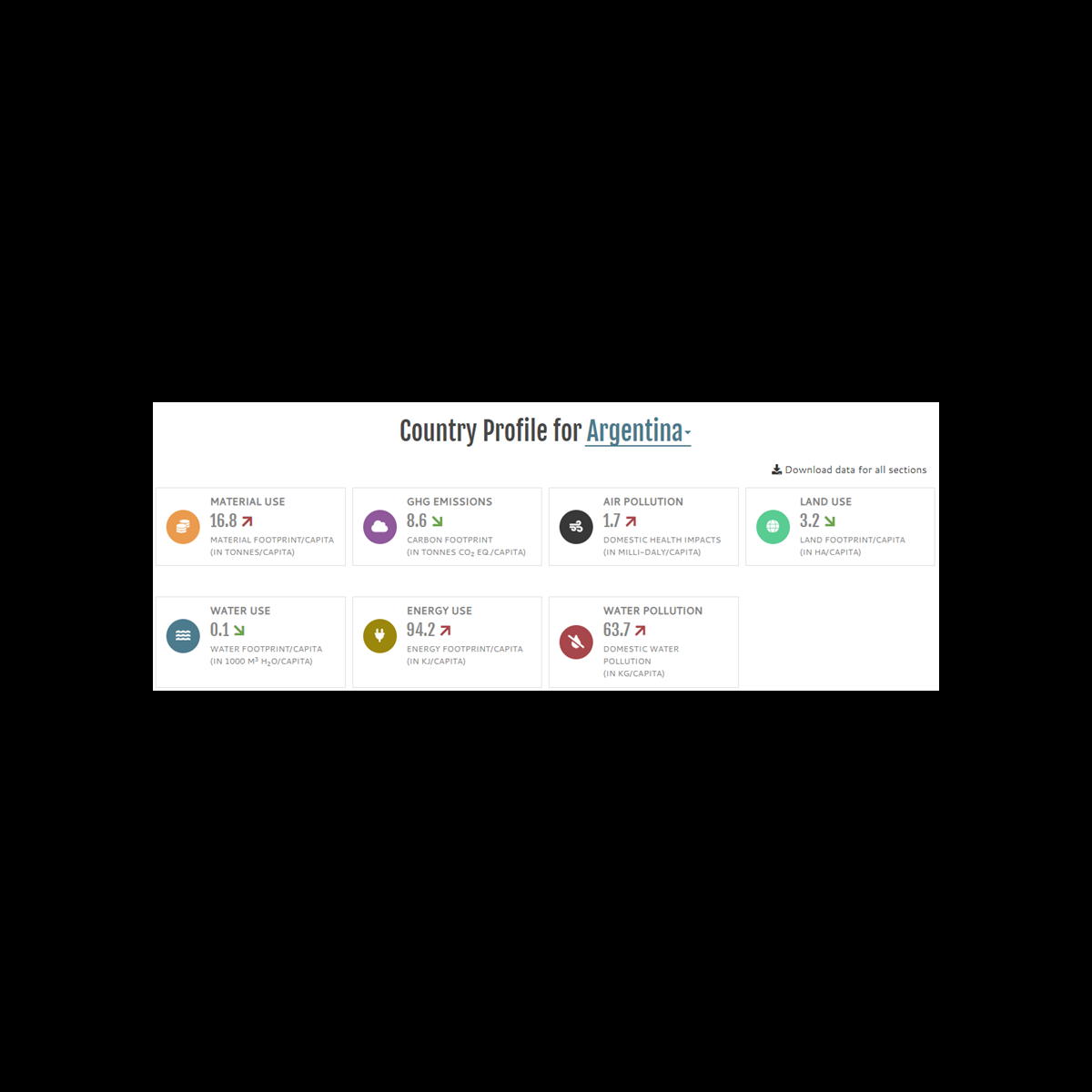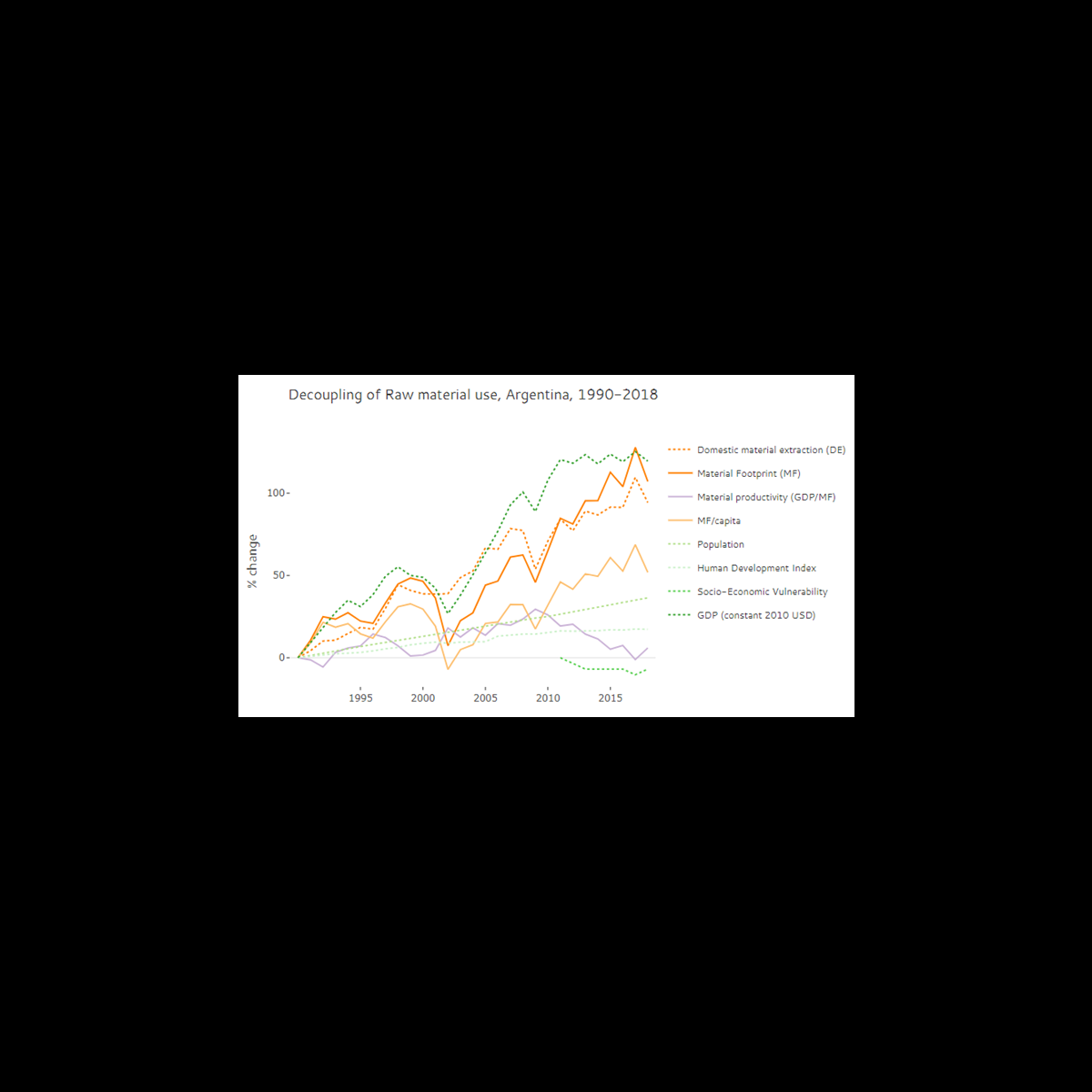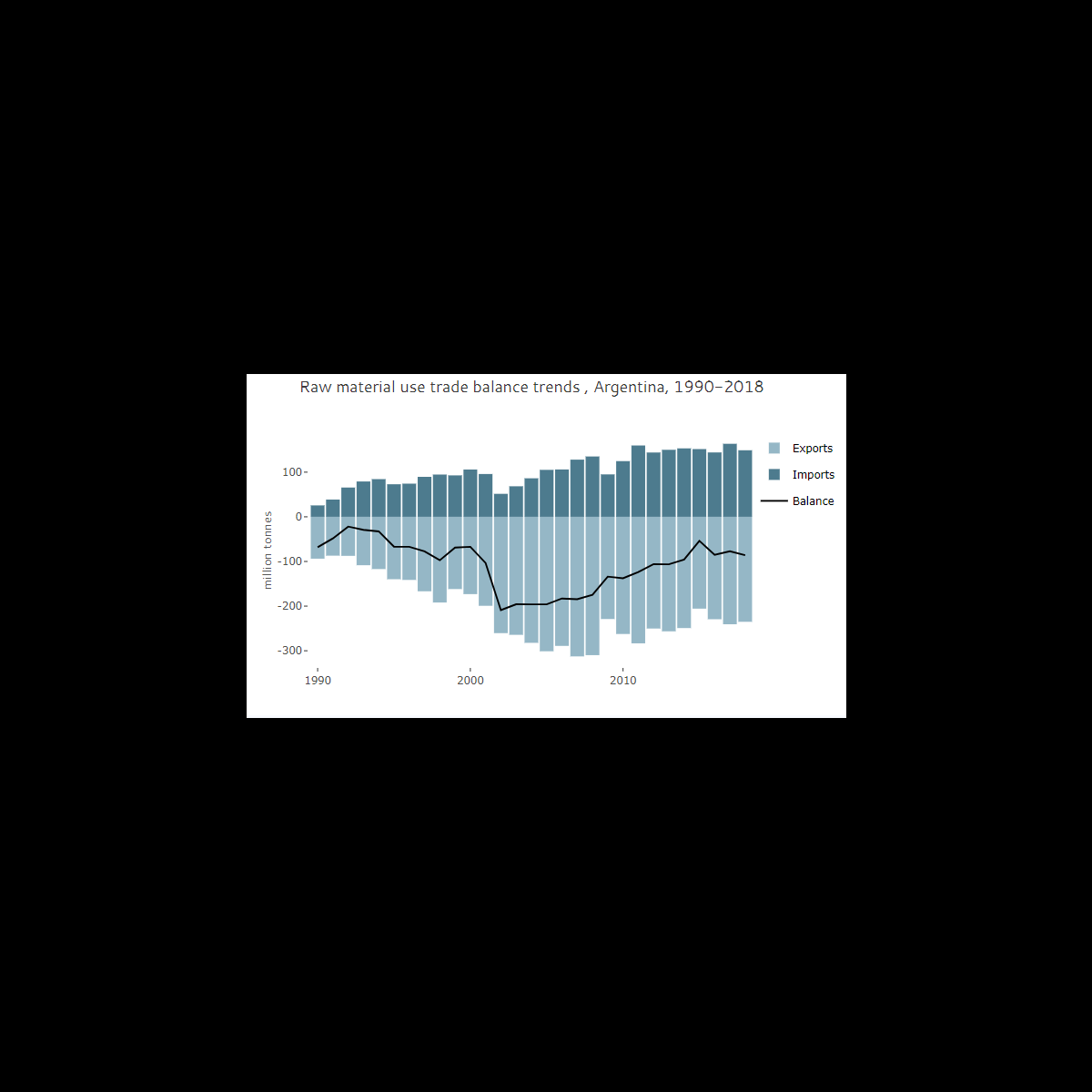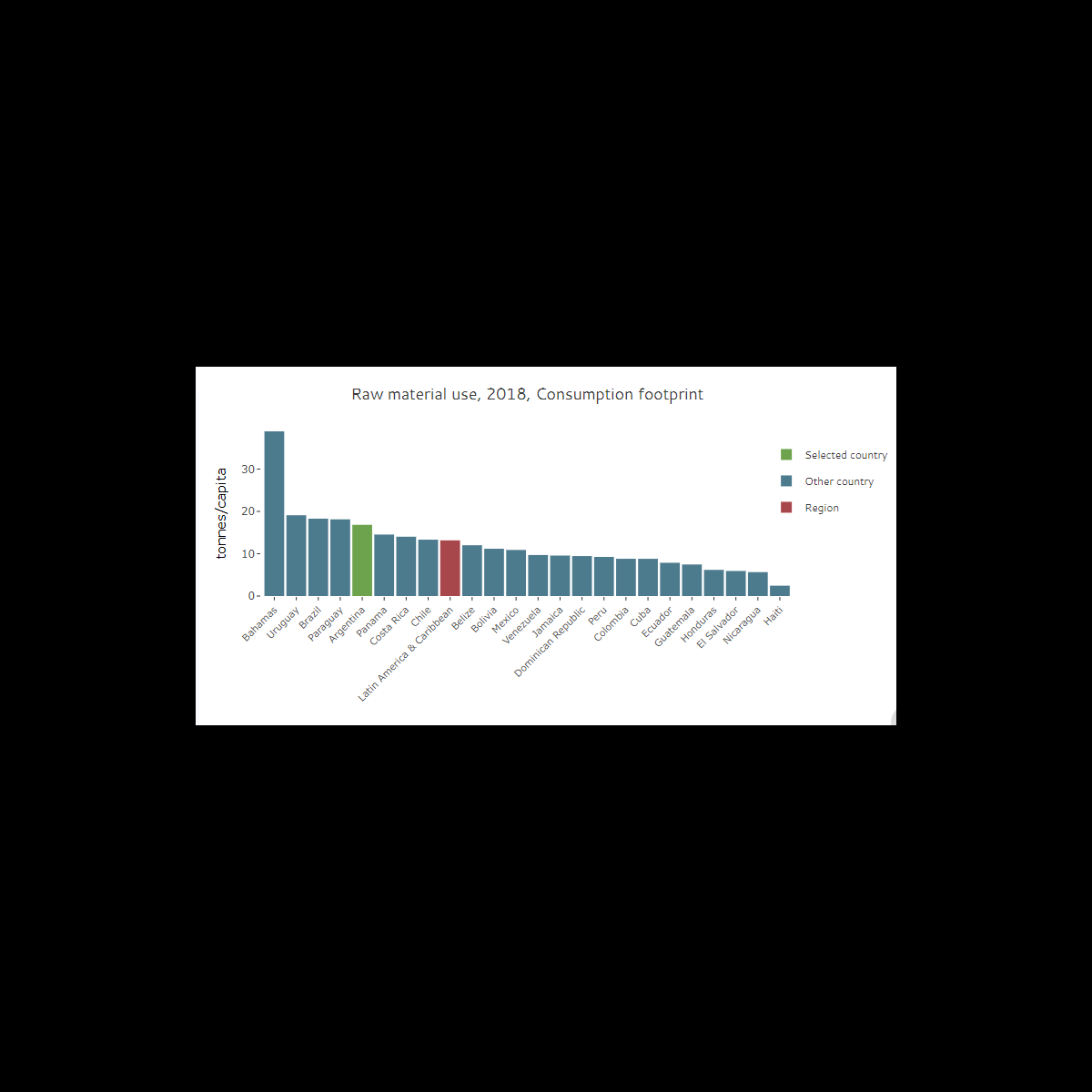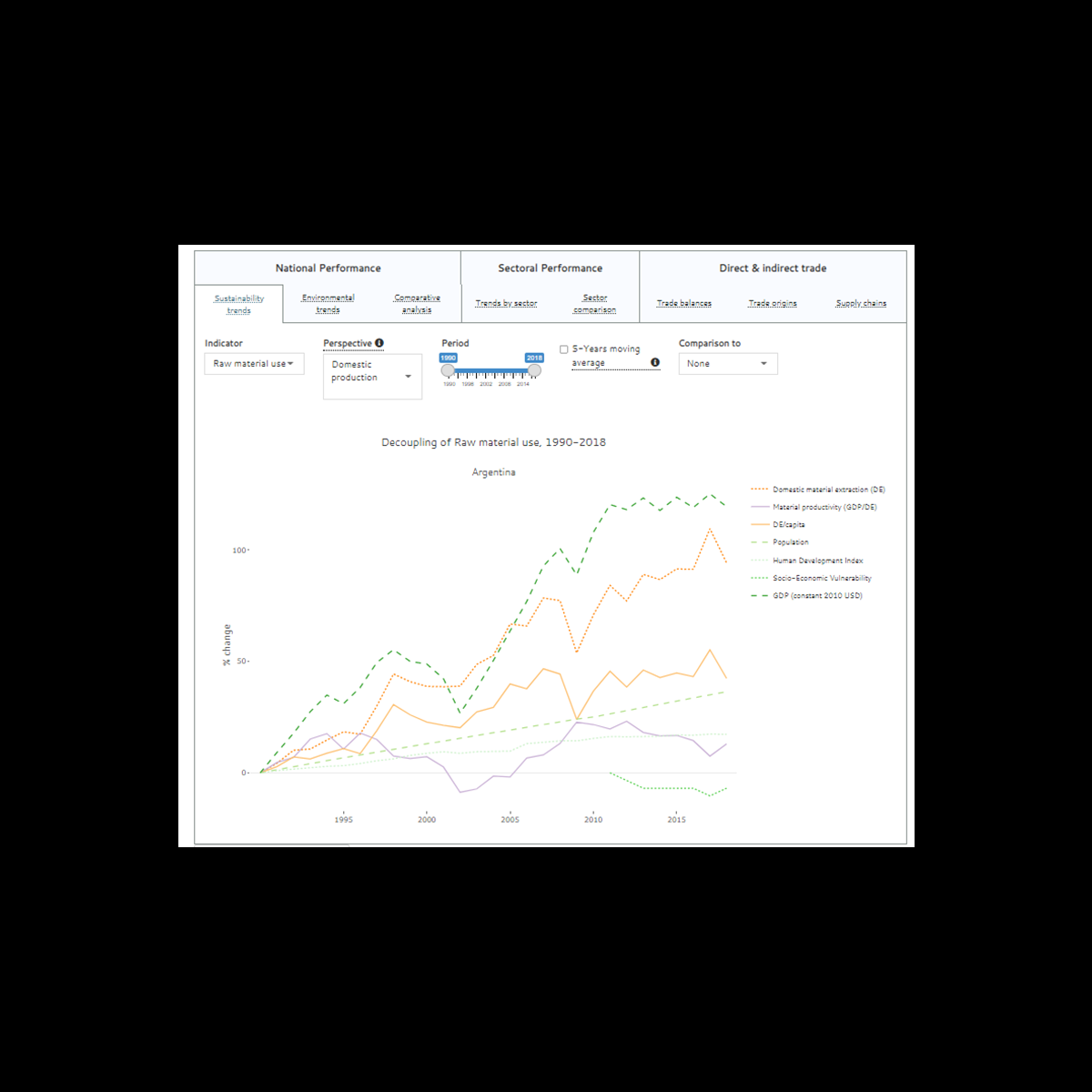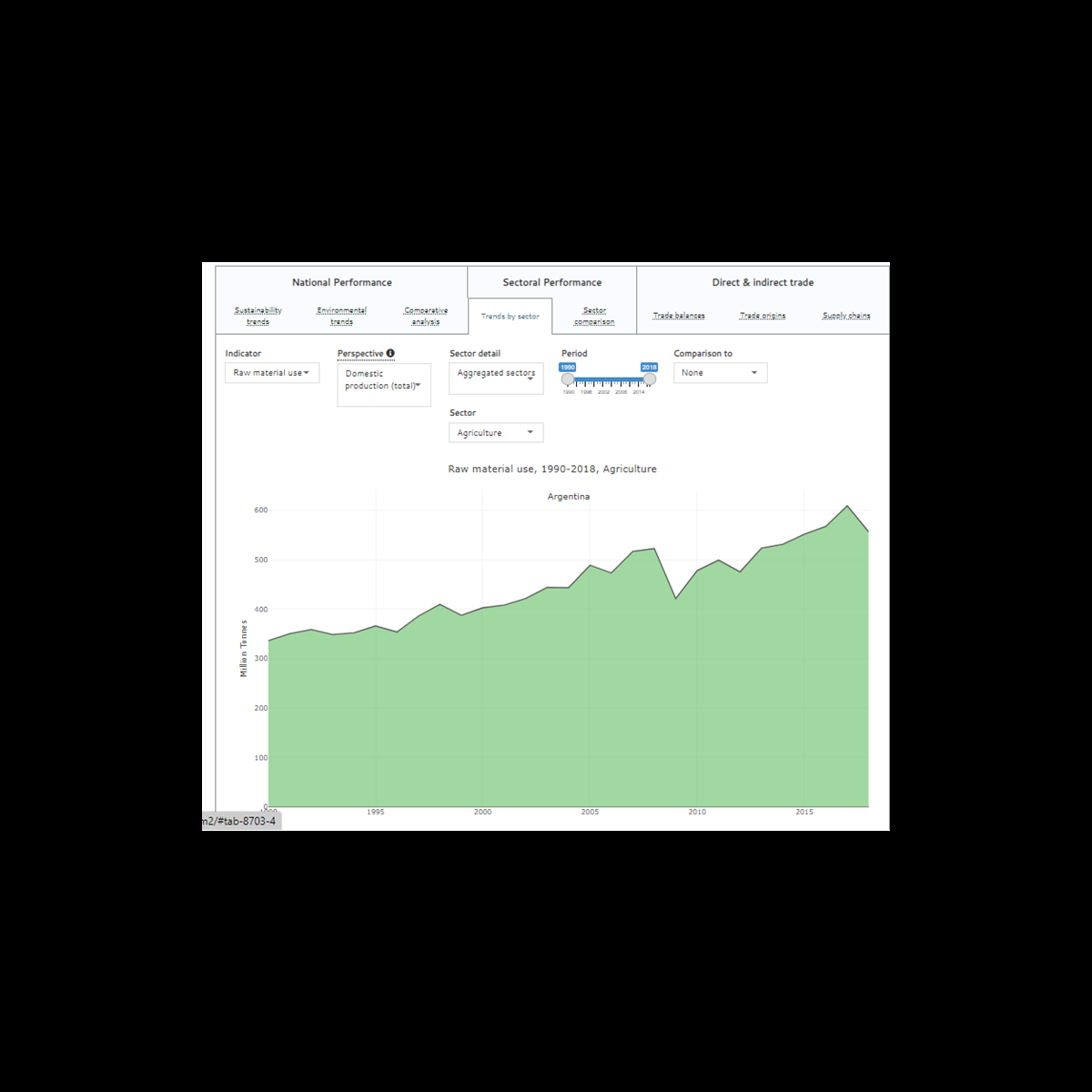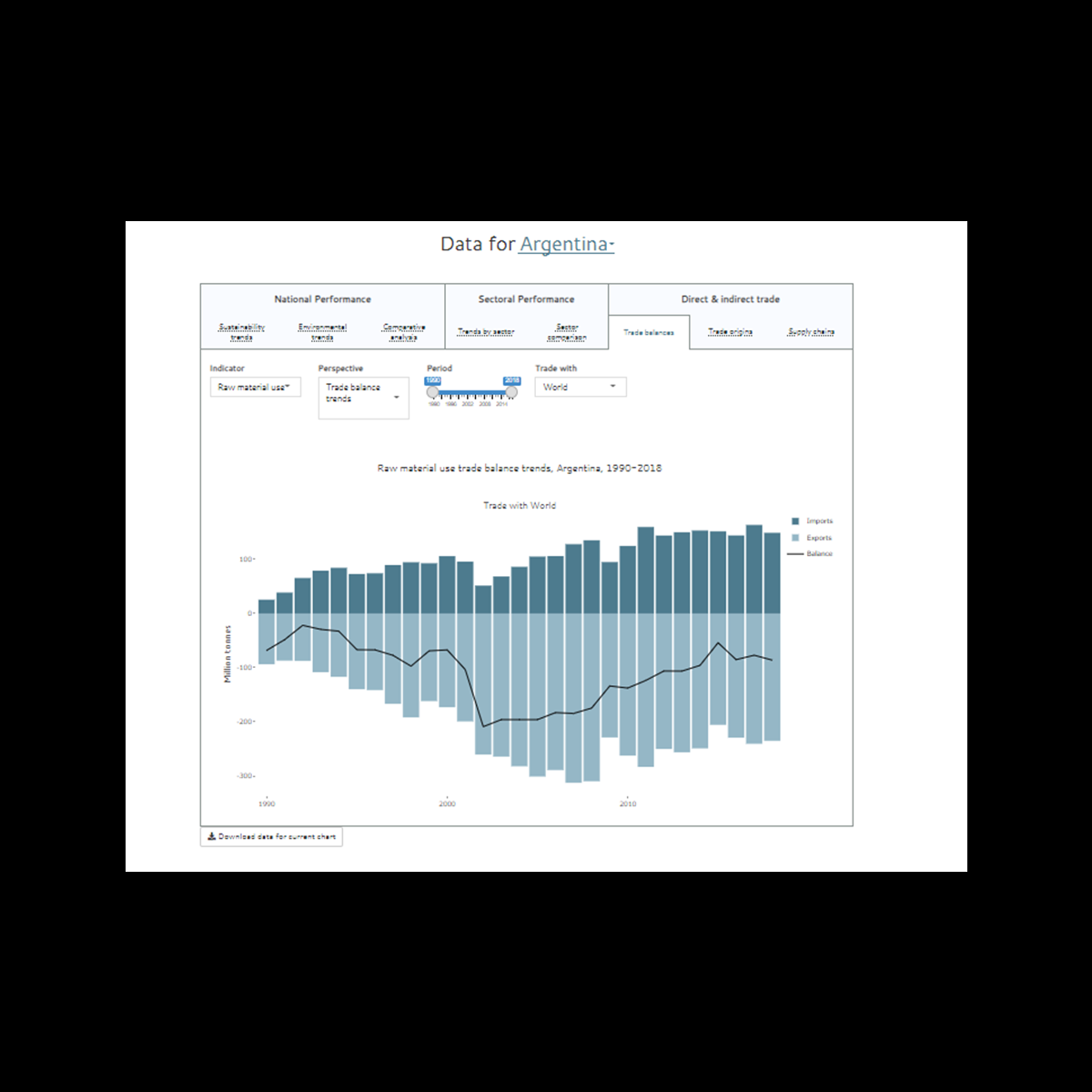SCP Hotspot Analysis Tool
SCP Tool is a tool to identify hotspot areas of unsustainable consumption and production. The tool analyzes a range of environmental pressures and impacts caused by domestic production. It also shows the environmental consequences of a country’s consumption occurring abroad. Results from the SCP-HAT can be used to set national SCP priorities.
This tool provides three modules to analyse hotspot areas of sustainable consumption and production. Two modules are currently in operation (country profile) and (hotspot identification). If follows a systemic and life- cycle analysis focuses on key hotspots across different value chains in 97 economic sectors. Module 3 is under construction.
Module 1: ANALYSING COUNTRY PERFORMANCE This module provides key information on a country’s performance in the context of SCP-related policy areas. For each area, the policy context and the main indicators used are explained. Graphs and visualisations help to get an insight in the selected country’s performance.
Module 2 “Hotspots Identification includes a wide range of SCP indicators to analyse hotspots of unsustainable consumption and production at country and sector levels. Results help to identify areas where political action is needed.
SCP-HAT presents two different SCP perspectives to analyze environmental indicators.
Domestic production (“territorial approach”) Here, environmental pressures and impacts are illustrated for the country where they physically occur. For example, SCP-HAT shows the share of greenhouse gas emissions or raw material extraction in the domestic economy.
Consumption footprint (“footprint approach”) Under the footprint approach, environmental pressures and impacts are shown for the country where the final consumption of products and services occurs. The consumption footprint looks across the whole supply chain of products, including those activities occurring outside of the country. For example, the tool shows land use beyond national borders, that is used to produce food products consumed in-country.
SCP-HAT Indicators SCP-HAT has a wide range of indicators, covering environmental pressures, environmental impacts and key socio-economic indicators like population, gross domestic production (GDP) and human development index (HDI). Below the definitions used for each indicator.
Environmental pressures
- Raw material use: Use of renewable materials e.g. agriculture, forestry and non-renewable materials, e.g. fossil fuels, metals and minerals
- Land use: Six land use groups: annual crops, permanent crops, pasture, extensive forestry, intensive forestry, urban areas
- Blue Water consumption: Total annual blue water consumption, e.g. water stemming from groundwater bodies or surface water sources such as rivers or lakes
- Primary energy: Use of primary energy from different energy carriers, e.g. coal and peat or nuclear
Environmental impacts
- Mineral depletion: compares the annual extraction rate of a raw material with the geological reserves of mineral resources
- Fossil fuels depletion: compares the annual extraction rate of fossil fuels with geological reserves of fossil fuels
- Climate change (short-term): Rate of temperature change, expressed in Global Warming Potential for a 100 year horizon (GWP100)
- Climate change (long-term): Long-term temperature rise, expressed in Global Temperature Change Potential for a 100 year horizon (GTP100)
- Potential species loss from land use: Impact of land-using production processes on biodiversity • Air pollution (human health): Damage to human health from breathing in particulate matter, expressed in Disability-Adjusted Life Years (DALY)
- Water scarcity: Available water (per area) in a watershed after the demand of humans and aquatic ecosystems has been met. The less water, the higher the risk for water stress
- Marine eutrophication: Impacts of nitrogen run-off from air pollution and leach or run off from agricultural systems into rivers
More details link to the User Guide Sustainable Consumption and Production Hotspots Analysis Tool (SCP-HAT) A brief guide for users (lifecycleinitiative.org)
Available courses on life-cycle approach for policies and businesses:
E-learning courses - Life Cycle Initiative
Available courses of the value-chain approach - e-webinar focused on the tourism value chain

Item Assessment information
Needs addressed
- Developing strong governance and policies
- Scaling sustainable and circular business models
- Adopting SCP norms, technologies and practices
Leaving no one behind
- Addressing SCP needs of the national population (including vulnerable groups)
- Promoting equal women/men participation and development with SCP
- Enhancing SCP practices and collaboration between key stakeholders (public and private)
Applicability
- Tested
- Implemented
- Evaluated Proof of Concept
- Applicable multiple countries
Organizations
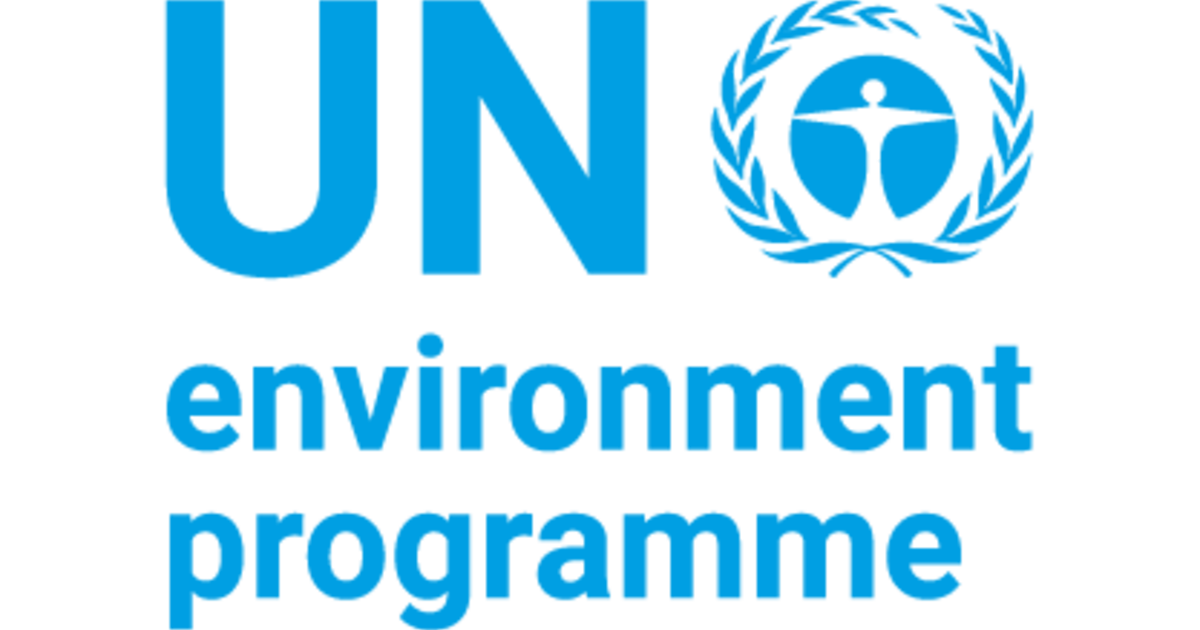

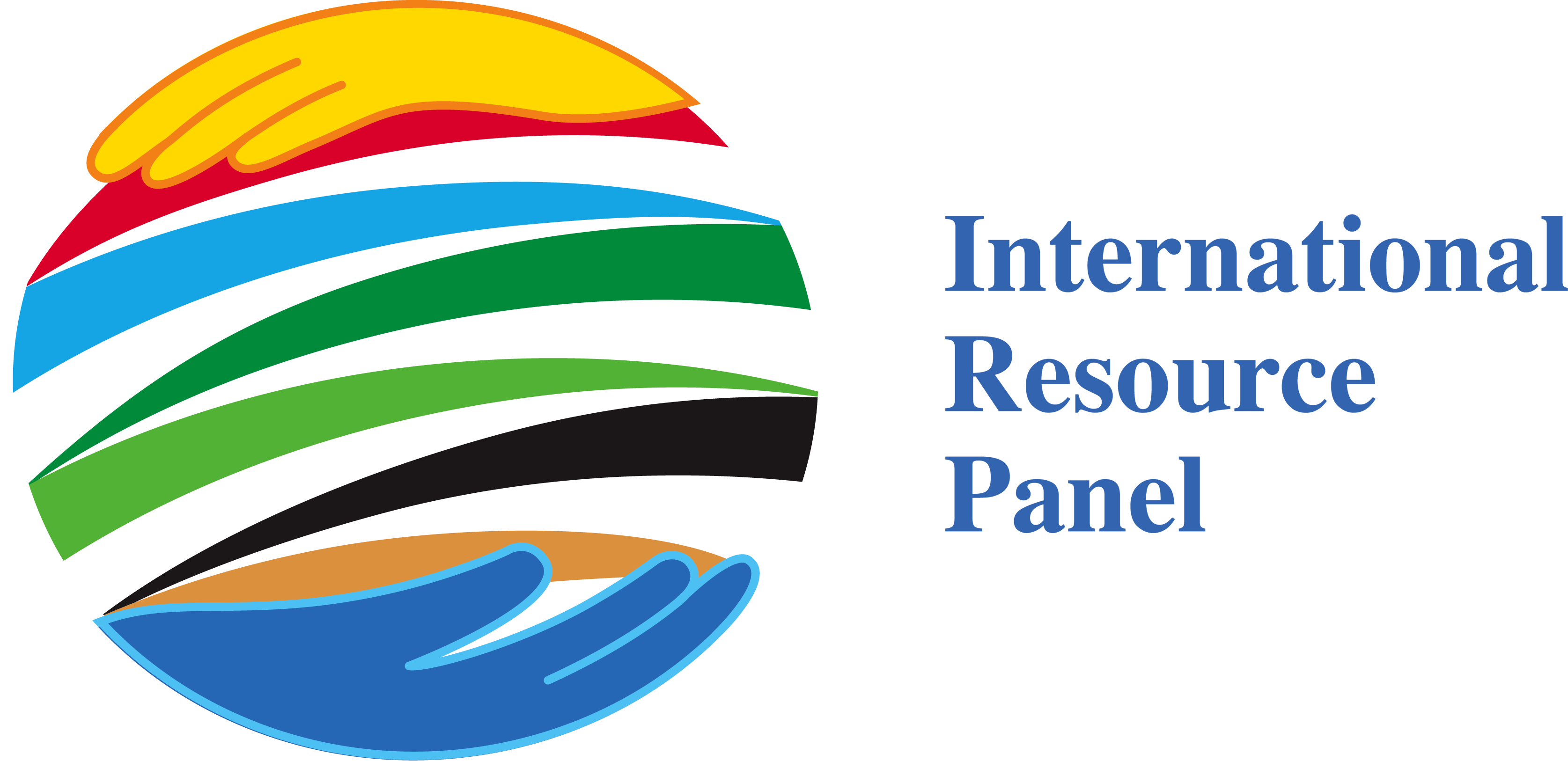
-
12.1
-
12.2
-
12.3
-
12.4
-
12.5
-
12.6
-
12.7
-
12.8
-
12.a
-
12.b
-
12.c
How does the tool make an impact on SDG12?
All SDG 12 targets are tackled directly or indirectly. Most prominently, target 12.2 is addressed via the inclusion of the key indicator (Material Footprint).
How does the tool make an impact across SDGs?
The tool makes direct impact on SDGs 1, 4, 6, 7, 8, 9, 12, 13, 15, as it covers most relevant environmental categories as well socio-economic aspects.

How does the tool promote and/or make an impact on MEAs?
Multilateral Environmental Agreements (MEAs) are international agreements that are intended to promote international cooperation to address global environmental challenges that the world is facing today like climate change, biodiversity loss and pollution and waste. They are based on the understanding that, just as the causes and the consequences of environmental issues are global in nature, so too must be the solutions. The tool offers a solution to countries with the analysis and science-based information to make progress on climate change, biodiversity loss, pollution and waste, by identifying the environmental pressures and impacts of sectors. The tool can help countries advance on their MEAs. It has been used by governments to support their respective National Development Contributions (NDCs).
Explanatory video
HOW TO/STEP-BY-STEP
Country Profile
This module gives a broad overview of how well a country is managing the environmental impacts caused by its consumption and production processes. Charts and graphs show a country’s evolution across four key areas: material use, climate change, air pollution & health and land use. Users can hover over images for additional information. It provides the key information regarding the country’s environmental performance, in the context of the most relevant SCP-related policy questions. The target users are policy makers, NGOs and the general public.
Hotspot Identification
Module 2 includes a wide range of SCP indicators from a consumption footprint perspective and domestic production perspective, to analyse hotspots of unsustainable consumption and production at country and sector levels. Results help to identify areas where political action is needed.
